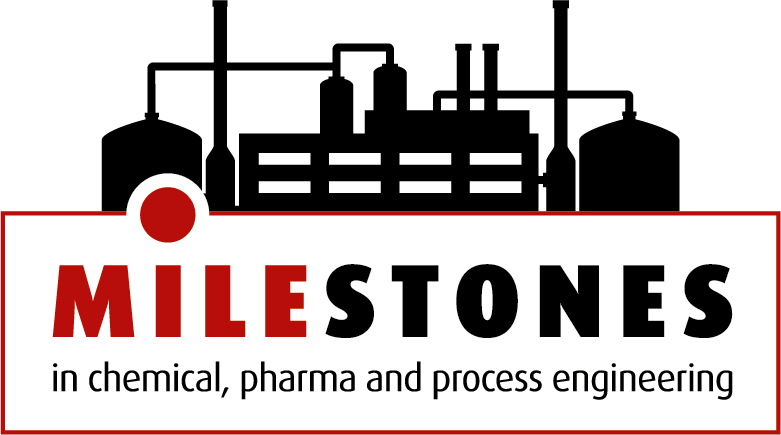:quality(80)/images.vogel.de/vogelonline/bdb/1802400/1802411/original.jpg)
CCU Six Technologies Nominated for ‘Best CO2 Utilisation 2021’ Innovation Award
The board members of the ‘9th Conference on CO2-based Fuels and Chemicals’ have shortlisted six technologies for the show’s innovation award ‘Best CO2 Utilisation 2021’. Three winners will be announced at the virtual conference which will be held from March 23-24, 2021.
Related Companies

Germany – Carbon capture and utilization (CCU) is one of the most obvious solutions to further reduce CO2 emissions, but it is yet still hardly exploited. However, these six nominated technologies turn CO2 into value: ethanol, methanol, polyols, surfactants or syngas – the audience will choose the winner at the ‘9th Conference on CO2-based Fuels and Chemicals’ which will be held from March 23–24, 2021, online!
The advisory board of the conference has now nominated six promising technologies as candidates for the innovation award ‘Best CO2 Utilisation 2021’. After a short presentation of all six nominees, three winners will be elected by the participants on March 23, 2021, the first day of the online conference (www.co2-chemistry.eu). The innovation award will be presented for the third time, it is sponsored by Yncoris (Germany) and organized by the nova-Institute (Germany) and CO2 Value Europe (Brussels).
Six Nominees from Four Different Countries!
bse Methanol (Germany): Flex Methanol
Flex Methanol will enable economically viable transformation of excess electrical power and off-gas CO2 into methanol as chemical energy storage and feedstock within small-scale and delocalized production units. Using a tailor-made catalyst, the direct conversion of CO2 is ensured without a cost-intensive water-gas-shift reactor. Flex Methanol consists of four industrially available process steps (electrolysis, CO2 scrubbing, methanol synthesis and distillation) as 10 and 20 MW modules scalable up to 100 MW. Flex Methanol significantly stabilizes the revenues by dynamic operation according to the power market and price conditions, e.g., switching from feed into the grid and producing methanol from hydrogen. As a result, no feed storage tanks are necessary.
Carbon Recycling International (Iceland): Emissions-to-Liquids Technology
Carbon Recycling International (CRI) has been developing its Emissions-to-Liquids (ETL) technology since 2006. CRI's first industrial demonstration plant was commissioned in Iceland in 2012. It has a capacity of 4,000 tons methanol per year. ETL converts CO2 and hydrogen into methanol in a one-step reaction. In 2020 the company moved from industrial demonstration scale to full commercial scale with a project in Anyang, Henan province, China. A plant, which will have a capacity of 110,000 tons methanol per year, will be commissioned in 2021. This represents an important step for CO2 hydrogenation projects worldwide. The CO2-based methanol is used for gasoline blending, biodiesel esterification, fuel cell operation, waste-water denitrification and chemicals production.
Covestro (Germany): Washing with CO2-Technology – Surfactants based on CO2
CO2 instead of petroleum – Covestro is pursuing new avenues for turning the waste gas into a useful raw material. The goal is to use CO2 as resource in as many applications as possible. And the next scope is here to come: Surfactants based on CO2! First application tests have shown that these CO2-based surfactants can be used in a standard detergent formulation. The product development process is still in progress and the boundary conditions are already set: less fossil-based, less global warming potential, readily biodegradable and comparable washing performance – a new class of more sustainable surfactants for the everyday businesses.
Dimensional Energy (USA): HI-Light Reactor Platform
Dimensional Energy (DE) has developed a concentrated solar fuels platform technology for converting CO2 to syngas (CO + H2 mixtures) with remarkable efficiency of > 50 % CO2 conversion (3rd party verified by 350 Solutions during the XPrize competition in Gillette, Wyoming, USA). The robust platform technology utilizes DE catalysts, reactor designs, and software in an integrated unit, and was tested on-sun during the Carbon XPrize Finals. The 5 tons/year demonstration plant was shown to work during variable weather and with no catalyst degradation. The reactor is scalable to parabolic dish size, and the modular system can be easily expanded by additional units. Continued development of the platform will yield > 70 % conversion in 2021, and will integrate a Fischer-Tropsch reactor for kerosene production from the syngas.
Lanza Tech (USA): Carbon Smart Ethanol
The Carbon Smart Ethanol technology relates to capturing carbon and creating value from waste; effectively turning pollution into products. Lanza Tech uses microorganisms to make ethanol from the carbon emissions of industrial processes like steel, syngas from municipal solid waste, waste wood or waste plastics. Ethanol is a chemical building block that can be used to produce a broad range of everyday products from household cleaning products, plastic shampoo bottles, furniture and toys, to fine fragrances and sporting goods. With a commercial plant in China that has produced over 20,000 tons of ethanol and mitigated over 100,000 tons of CO2 since 2018 and the first EU plant in Belgium in 2021, the technology is rapidly gaining traction in the market.
UR One (Canada): Dissociation of Greenhouse Gas Oxides using Plaron Technology
Commercially ready carbon capture with 80 % lower operating and capital costs and dissociation of greenhouse gases including CO2, CO, NOx, SO2, SO. Carbon is captured as high value allotropes Buckminster Fullerenes with > 90 % capture rate. No consumables except electricity, and a small amount of water. All greenhouse gases from a 300 MW coal plant can be treated using only 3 MW of power and no back pressure. Only small amounts of electricity are required to separate molecules into their elemental components. Carbon is collected in water in the form of Buckminster Fullerenes (C60, C70, C80 and nano tubes) and other high value carbons.
(ID:47186077)




:quality(80)/images.vogel.de/vogelonline/bdb/1799900/1799924/original.jpg)
:quality(80)/images.vogel.de/vogelonline/bdb/1799500/1799527/original.jpg)
:quality(80)/images.vogel.de/vogelonline/bdb/1799300/1799320/original.jpg)
:quality(80)/images.vogel.de/vogelonline/bdb/1802600/1802664/original.jpg)
:quality(80)/images.vogel.de/vogelonline/bdb/1801500/1801596/original.jpg)
:quality(80)/images.vogel.de/vogelonline/bdb/1801500/1801585/original.jpg)
:quality(80)/images.vogel.de/vogelonline/bdb/1801500/1801567/original.jpg)
:quality(80)/images.vogel.de/vogelonline/bdb/1797000/1797083/original.jpg)
:quality(80)/images.vogel.de/vogelonline/bdb/1794500/1794521/original.jpg)
:quality(80)/images.vogel.de/vogelonline/bdb/1795400/1795494/original.jpg)
:quality(80)/images.vogel.de/vogelonline/bdb/1793300/1793348/original.jpg)
:quality(80)/images.vogel.de/vogelonline/bdb/1803100/1803151/original.jpg)
:quality(80)/images.vogel.de/vogelonline/bdb/1801100/1801105/original.jpg)
:quality(80)/images.vogel.de/vogelonline/bdb/1801000/1801031/original.jpg)
:quality(80)/images.vogel.de/vogelonline/bdb/1801000/1801013/original.jpg)
:quality(80)/images.vogel.de/vogelonline/bdb/1793300/1793360/original.jpg)
:quality(80)/images.vogel.de/vogelonline/bdb/1790500/1790551/original.jpg)
:quality(80)/images.vogel.de/vogelonline/bdb/1781300/1781356/original.jpg)
:quality(80)/images.vogel.de/vogelonline/bdb/1779700/1779733/original.jpg)
:quality(80)/images.vogel.de/vogelonline/bdb/1803200/1803242/original.jpg)
:quality(80)/images.vogel.de/vogelonline/bdb/1803100/1803188/original.jpg)
:quality(80)/images.vogel.de/vogelonline/bdb/1803100/1803191/original.jpg)
:quality(80)/images.vogel.de/vogelonline/bdb/1797900/1797927/original.jpg)
:quality(80)/images.vogel.de/vogelonline/bdb/1797600/1797603/original.jpg)
:quality(80)/images.vogel.de/vogelonline/bdb/1788100/1788142/original.jpg)
:fill(fff,0)/p7i.vogel.de/companies/5f/98/5f98fbb2e7bf2/05-trm-filter-logo-with-slogan-en-alt.png)
:fill(fff,0)/images.vogel.de/vogelonline/companyimg/122600/122692/65.png)

:quality(80)/images.vogel.de/vogelonline/bdb/1682000/1682004/original.jpg)
:quality(80)/images.vogel.de/vogelonline/bdb/1772600/1772667/original.jpg)